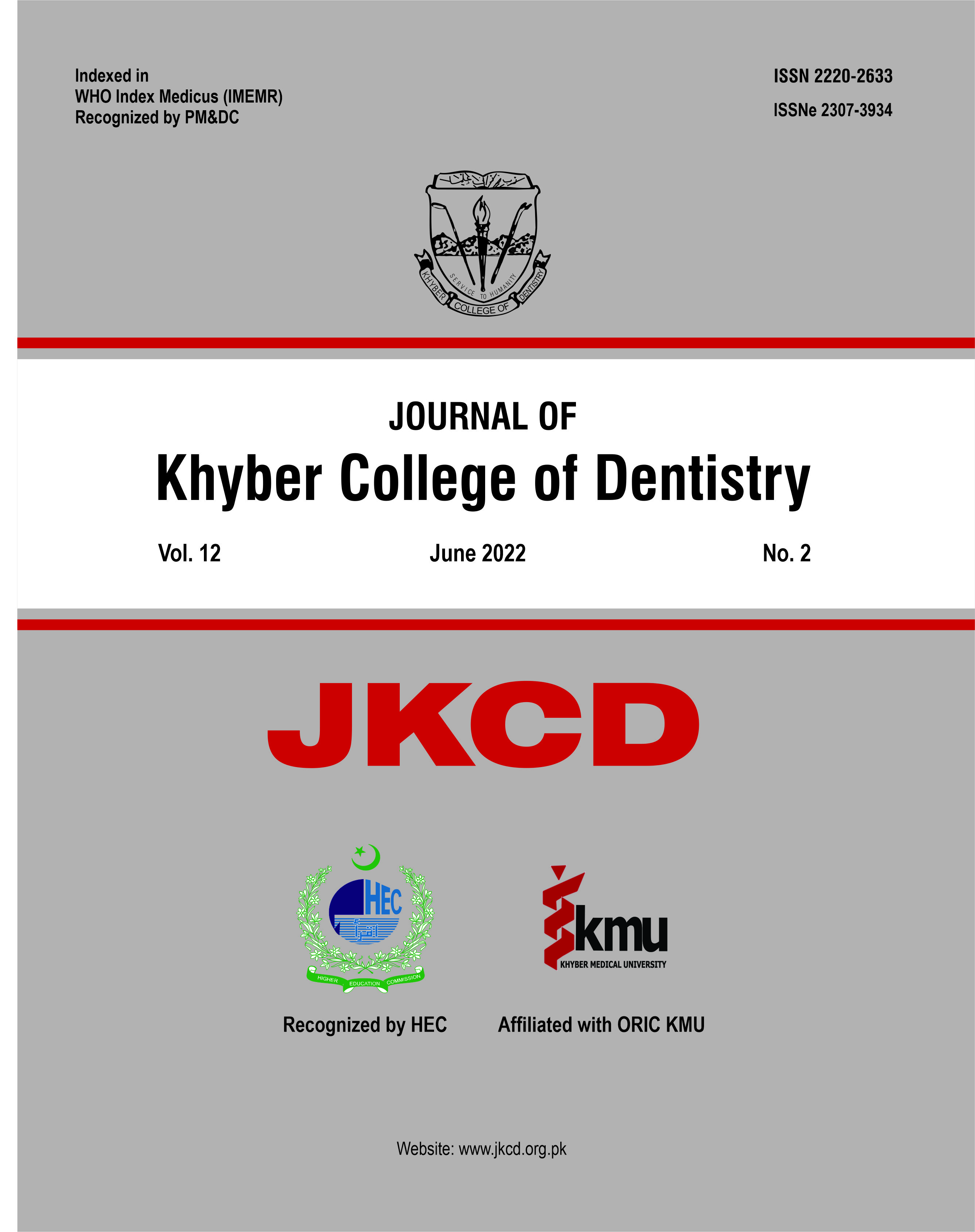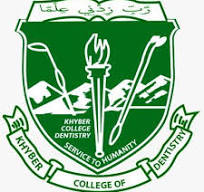COMPARISON OF VISUAL APPROXIMATION METHOD AND BRASS WIRE METHOD IN ASSESSING MODERATE AND SEVERE CROWDING IN KHYBER COLLEGE OF DENTISTRY, PESHAWAR
DOI:
https://doi.org/10.33279/jkcd.v12i2.69Keywords:
Arch Length Discrepancy, Guesstimate, Eye-Balling Method, Brass-Wire TechniqueAbstract
Objectives: To compare whether visual approximation and brass wire method give the same results when assessing moderate and severe crowding. The secondary objective is to compare time taken by two groups of residents in calculating crowding using the two methods.
Methods and materials: This cross sectional study was conducted in Orthodontics Department, Khyber College of Dentistry, using two dental models, one with moderate crowding and one with severe crowding. Visual approximation and Brass wire method were performed to assess crowding by 32 orthodontic residents. Results were recorded as mean, standard deviation, frequency and percentage. Participants were divided into two groups based on residency year and time taken using each method was noted. Data was analyzed by SPSS version 22. One sample t test was used to compare means of estimated crowding values with the actual value. Independent samples t test was used to compare means of times taken by the two group. P value ≤.05 considered significant.
Results: For moderate crowding, visual approximation over estimates crowding, while brass wire gives accurate results. For severe crowding, both methods underestimate it. More experienced residents took signifi cantly less time to calculate crowding using both methods.
Conclusion: Visual approximation is an unreliable method to assess moderate to severe crowding. Brass wire is reliable for moderate crowding, but underestimates severity of severe crowding. As experience of resident increases, time taken to measure crowding decreases.
Downloads
Published
How to Cite
Issue
Section
License
Copyright (c) 2022 Ahsan Mehmood Shah, Wardah Maryam, Muhammad Saood, Fatima Muhammad Khan, Aatikah Javaid, Mashal Kamran, Mashal Afridi

This work is licensed under a Creative Commons Attribution-NonCommercial-NoDerivatives 4.0 International License.
You are free to:
- Share — copy and redistribute the material in any medium or format
- Adapt — remix, transform, and build upon the material
- The licensor cannot revoke these freedoms as long as you follow the license terms.
Under the following terms:
- Attribution — You must give appropriate credit , provide a link to the license, and indicate if changes were made . You may do so in any reasonable manner, but not in any way that suggests the licensor endorses you or your use.
- NonCommercial — You may not use the material for commercial purposes .
- No additional restrictions — You may not apply legal terms or technological measures that legally restrict others from doing anything the license permits.










